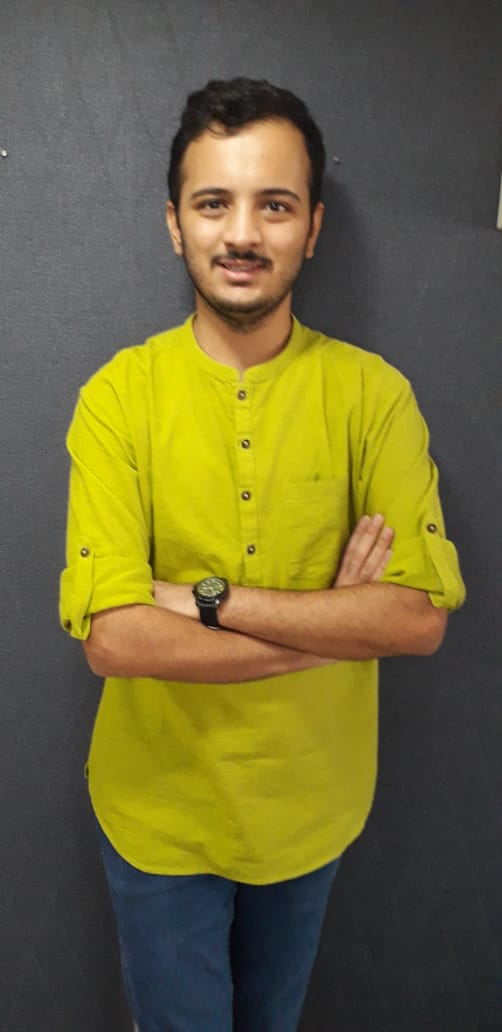India’s journey from milk-deficient country to milk exporter
Milk is one of the main sources of protein. It is interesting to know how India became transformed itself from milk deficient country to the largest milk producer and started exporting the milk
Total Views |
Today, everyone consumes a large amount of milk in India. Nowadays, milk is also easily available at any grocery shop or at independent milk shops. Today’s generation cannot imagine standing in a queue or having a milk license and getting milk on a ration. This is the journey of India from a milk-deficient country to the largest milk producer and exporter.
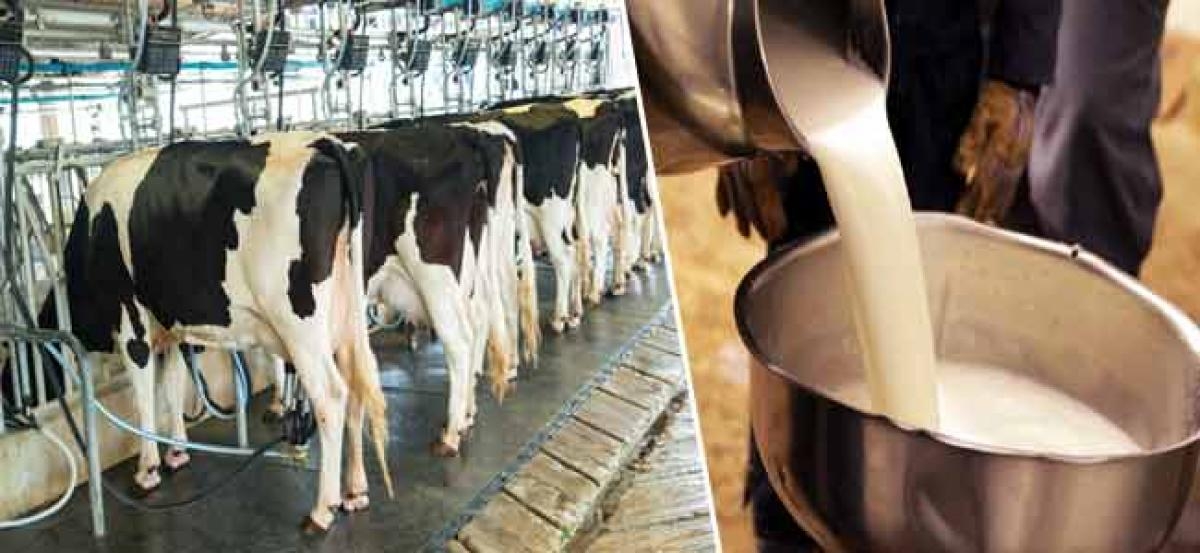
Milk is an animal product and hence a part of the primary sector in economic terms. In India, the primary sector contributed nearly 21% of the 2020-21 GDP at current prices. As per ‘Economic Survey 2021-22’, it is the largest employer of the workforce and also accounted for nearly 18% (2021-22) in Gross Value Added (GVA) of the country with a growth of almost 3.6% in 2020-21 and 3.9% in 2021-22. The primary sector includes all economic activities directly dependent on natural resources. Majorly agriculture, forestry, fishing, mining and quarrying are parts of the primary economic sector. The sector is very vast and for the sake of this article, we would be looking at the agricultural sector.
Also Read: India in Space
In the agricultural sector animal husbandry is one of the major sources of side income for a large number of farmers in India. Animal products contribute considerably to the village economy. India ranks first in milk production and also in the population of cattle and buffalo. In India, livestock includes chattels, buffalos, sheep, goats, and poultry. In the year 2016-17 the share of livestock in the Indian economy in GVA at the 2011-12 price was 3.99% and at the current price, it was 4.62%. In this article, we will think about milk production as it is consumed by many Indians and hence it is an important animal product. Before we dive into the subject, let's have a look at a number of livestock in India.
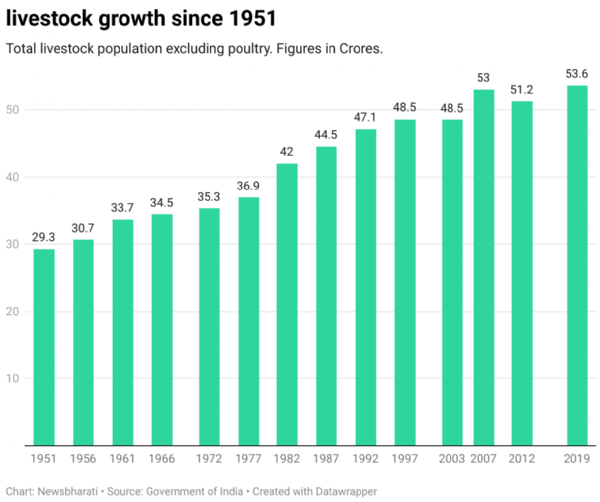
As the chart explains, livestock has increased in India. These figures include every animal listed above. Now let’s have a look only at Bovines. The total number of bovines includes a number of cattle, adult female cattle, buffalo and adult female buffalo. As we can see the names in this category, are animals which provide us with milk.
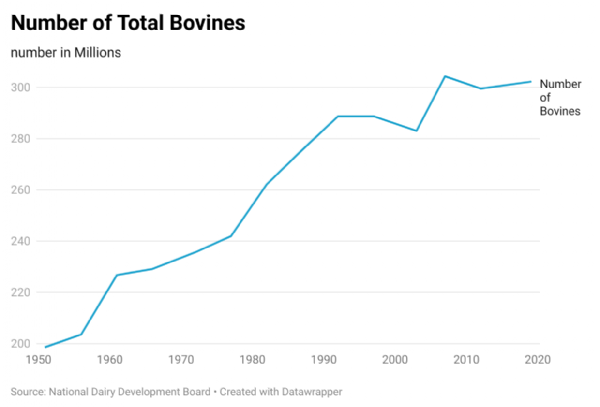
The number of bovines has increased since independence. The same is the case with milk production.
Operation Flood
The history of milk production would be incomplete without ‘Operation Flood’. It is a milestone in India’s milk production. It converted India into the largest milk producer in the world. The way to reach this position was very long and it included various stages. Let’s have a glimpse at it.
In 1951, the per capita consumption of milk was very low nearly 124 gms per day and this dropped to 107 gms per day per person by 1970, one of the lowest in the world and well below the minimum recommended nutritional standard. The decade of the 1950s to 1960s was the decade when the growth of milk production in India was stagnant; even negative during some years. During independence, the annual compound growth rate of milk production was 1.64% which dropped to 1.15% during the 1960s.
After Prime Minister Lal Bahadur Shastri’s visit to the Anand district of Gujarat in 1964 the National Dairy Development Board (NDDB) was created in 1965. The aim was to implement the ‘Anand Pattern’ and promote milk production nationwide. Verghese Kurien, the first chairman of NDDB along with his team designed ‘Operation Flood’. In Operation Flood, milk sheds were created all over the country. Milk was bought from producers directly by milk cooperatives and then it was transported to cities where it was consumed. Operation Flood removed the need for middlemen and hence stabilized milk prices. It created National Milk Grid and quality milk reached consumers across 700 towns and cities.
Also Read: India’s Grains Story
Operation Flood accelerated India’s milk production drastically. Prior to Operation Flood, in 1968-69 the milk production was only 21.2 million tonnes (MT) which increased to 30.4 million tonnes (MT) in 1979-80 and 84.5 million tonnes (MT) by 2001-02. It also converted India from milk deficient country to the largest exporter of milk in the world. Within three decades (the 1980s, 1990s and 2000s) the daily milk consumption of the country also increased from as low as 107 gms per person to over 226 gms per person in 2002. The following chart shows the steady growth in milk production in India.
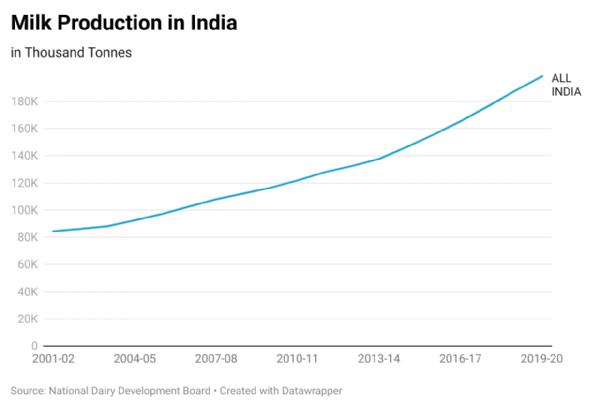
Today, India has become one of the largest producers of milk in the world. As per statistics available from ‘Agricultural and Processed Food Products Export Development Authority’ (APEDA), India exported dairy products worth of ₹1012.21 crores. As per data from ‘Food and Agriculture Organization of the United Nations’ (FAO) India produced 90,026,273 tonnes of raw milk of buffalo.
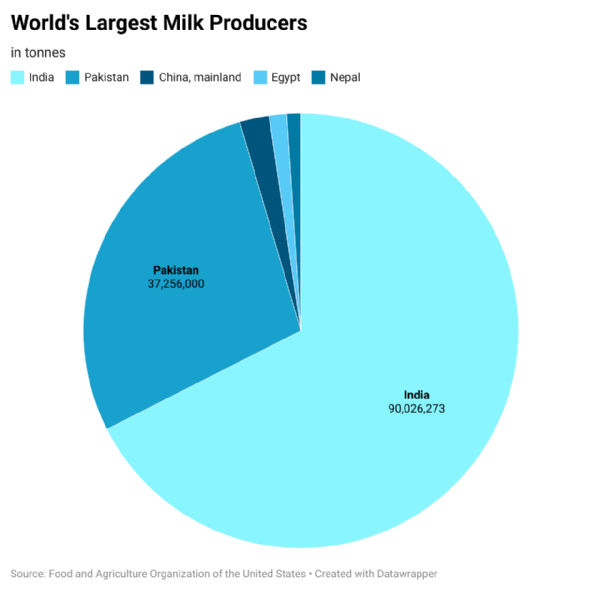
Various countries like Bangladesh, UAE, Baharin, Malaysia etc are the greatest importers of milk from India. Along with milk, India exports several milk products like butter.
Also Read: India’s Green Energy Story
Overall, we have seen that India has become self-dependent in the dairy sector. Some states' cooperative milk unions have become role models for other sectors. Operation Flood directly or indirectly affected various other sectors of the primary and agricultural sector of the economy. There are some renowned milk companies like Amul, and Mother Dairy in India that have also started expanding their business in some foreign countries. This is the outcome of Operation Flood.
